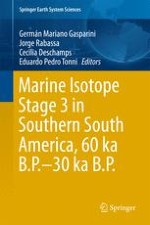This book presents isotope data reflecting changes in temperature derived from core samples in South America. Marine Isotope Stage (MIS) is examined in detail with respect to Stage 3. With over 20 chapters, this detailed treatise discusses high climatic variability, paleoclimatic events, Dansgaard-Oeschger cycles, continental vertebrates, sea level changes, vegetation and climate changes based on pollen records, and the non-Amazon landscape and fauna from 65 to 20 ka B.P. The book also looks at the earth’s magnetic field and climate change during MIS 3 and MIS 5 and presents a comparison between both stages with respect to marine deposits in Uruguay. With case studies drawn from Brazil, Argentina and Uruguay this book presents research from the some of the worlds experts in this field.
